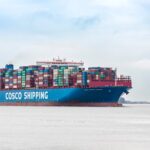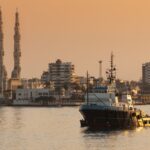Red Sea crisis drives air freight as alternative to higher maritime costs

From conflict in the Red Sea to drought in the Panama Canal, maritime carriers are facing a number of logistical challenges, contributing to longer transit times and higher costs.
Mike Parr, managing director of PML Seafrigo, said the challenges have required freight carriers to explore alternative routes and transit options.
“We have had to adapt and find solutions,” Parr told FreshFruitPortal.com. “Of course, transit times are longer now, and there is an increase in tariffs, but we do our best to offer alternatives like air freight in order to keep prices as low as possible.”
PML Seafrigo arose from the 2023 acquisition of UK-based Perishable Movements Limited (PML) by Seafrigo Group. The merger offers road, sea and air freight options for perishable products. Based out of France and the U.K, the company operates routes that connect more than 25 countries.
Parr says, despite the challenges, he’s optimistic that technological advances can compensate in many cases for longer transit times and allow perishables to remain fresh for longer.
For some products, like Indian grapes, however, maritime transit to the U.K. is still too long. That means importers are having to source from other origins.
“A lot of that product is ending up in the Far East, because it is too risky to bring it all the way around to the U.K,” Parr said.
Vessels that avoid the Suez Canal are doing so by rerouting around southern Africa, which adds 4,000 miles to each journey, increasing transport times and freight costs.
J.P. Morgan estimates about 30% of global container trade transits through the Suez Canal, which connects to the Red Sea. That has made the Red Sea conflict costly for global shipping. Prices for routes between Asia and Europe have increased nearly five fold, according to J.P. Morgan.
“The disruptions could add 0.7 percentage points to global core goods inflation, and 0.3 percentage points to overall core inflation, during the first half of 2024,” J.P. Morgan research indicated.
Expanding capacity and options
Parr says one way PML hopes to establish greater logistical control is through expanding operations.
“Our objective is to buy more land and operate our own facilities. This gives us more control over what we are doing,” he said.
Currently, PML operates a 66,000-square-foot facility at London Heathrow Airport. By 2027, PML aims to increase the space to between 150,000 and 200,000 square feet.











































